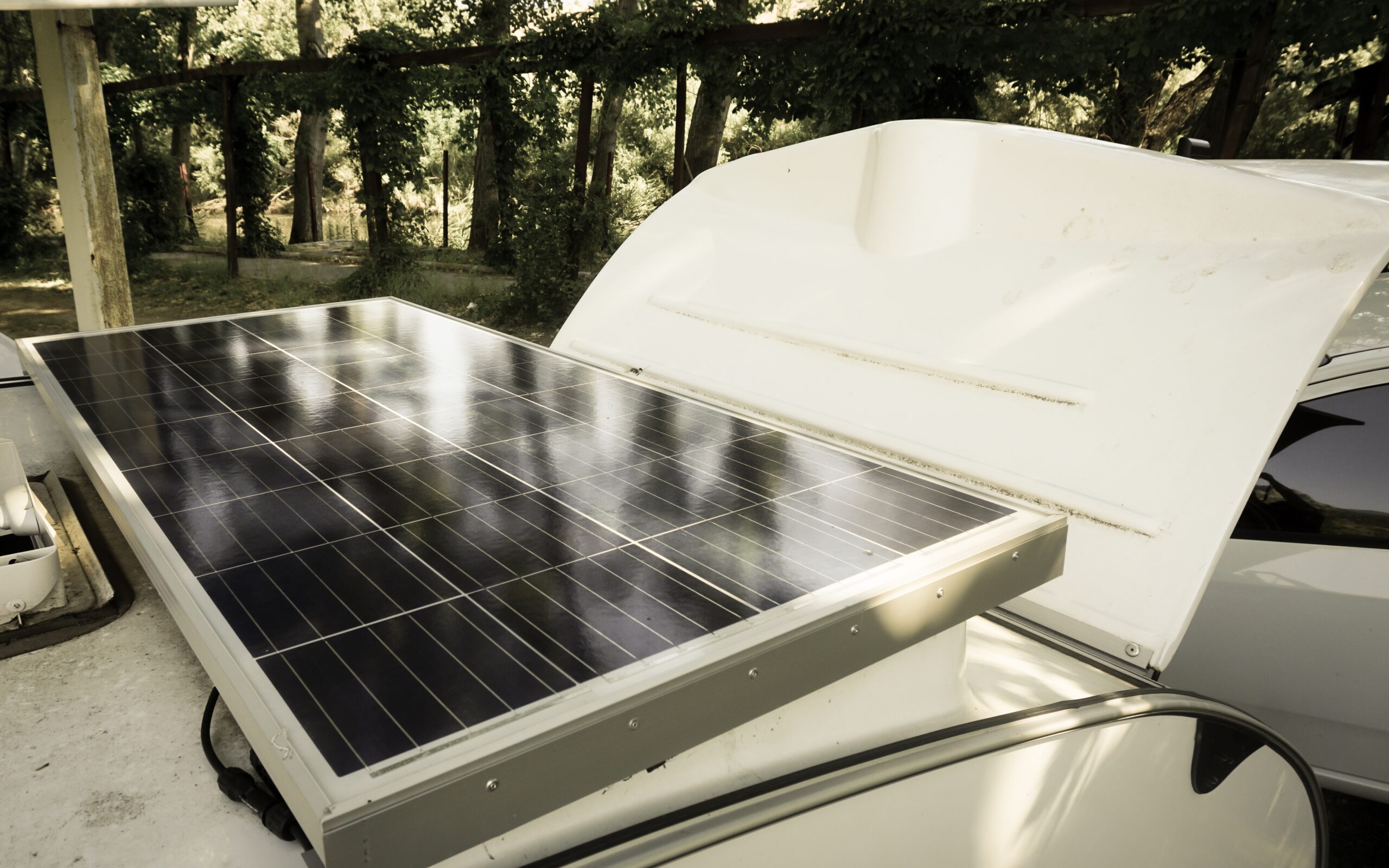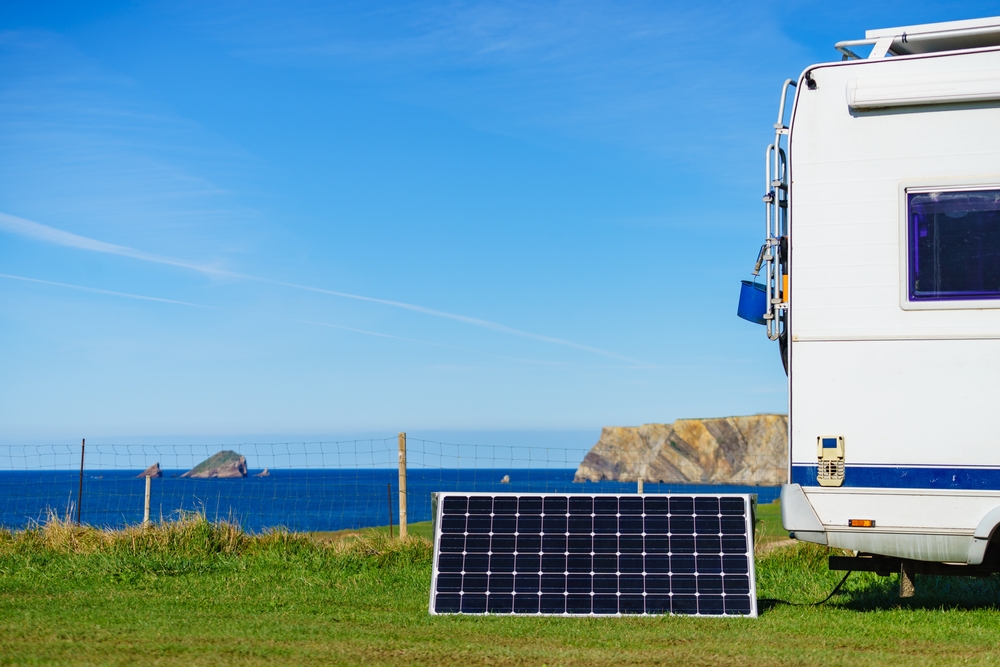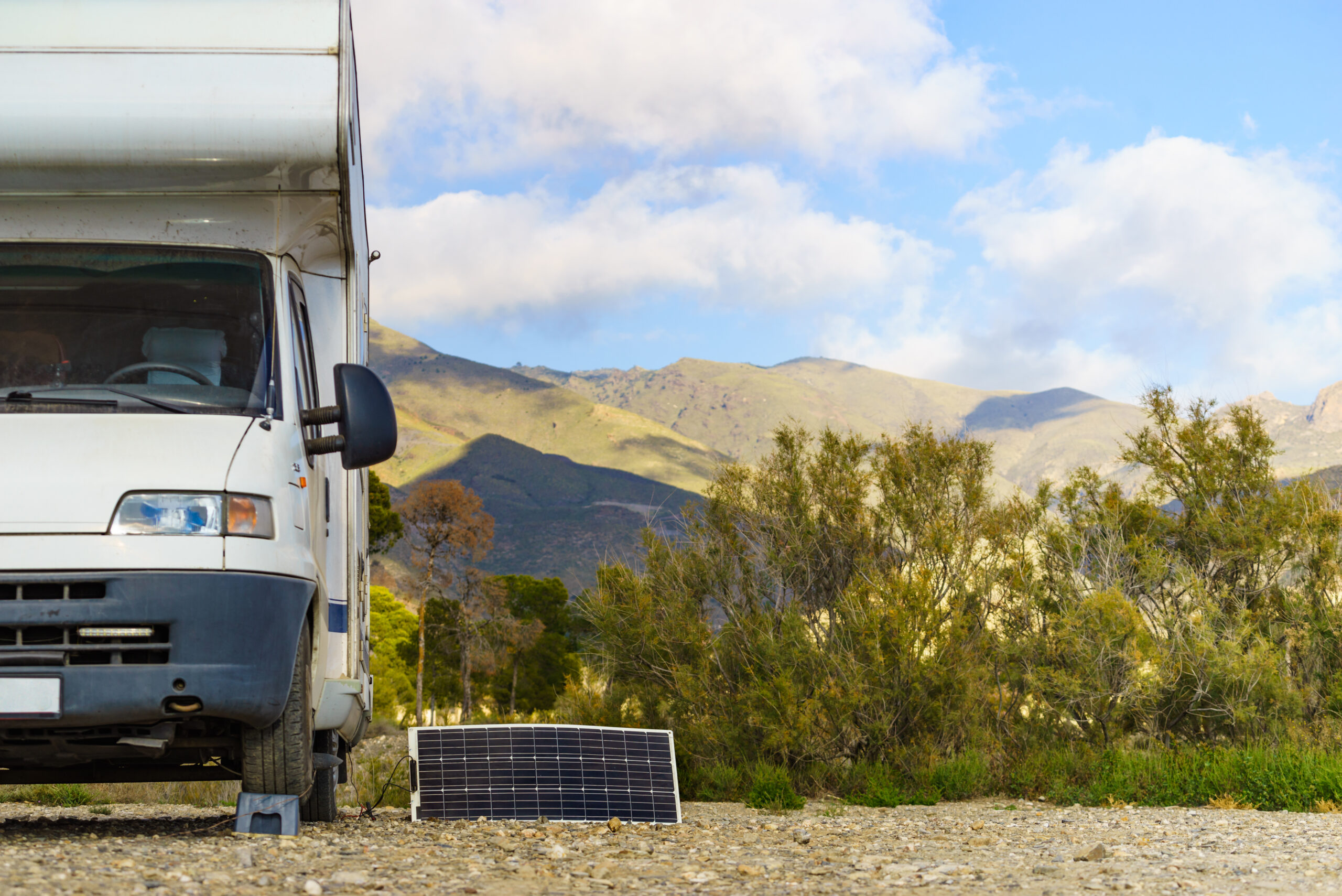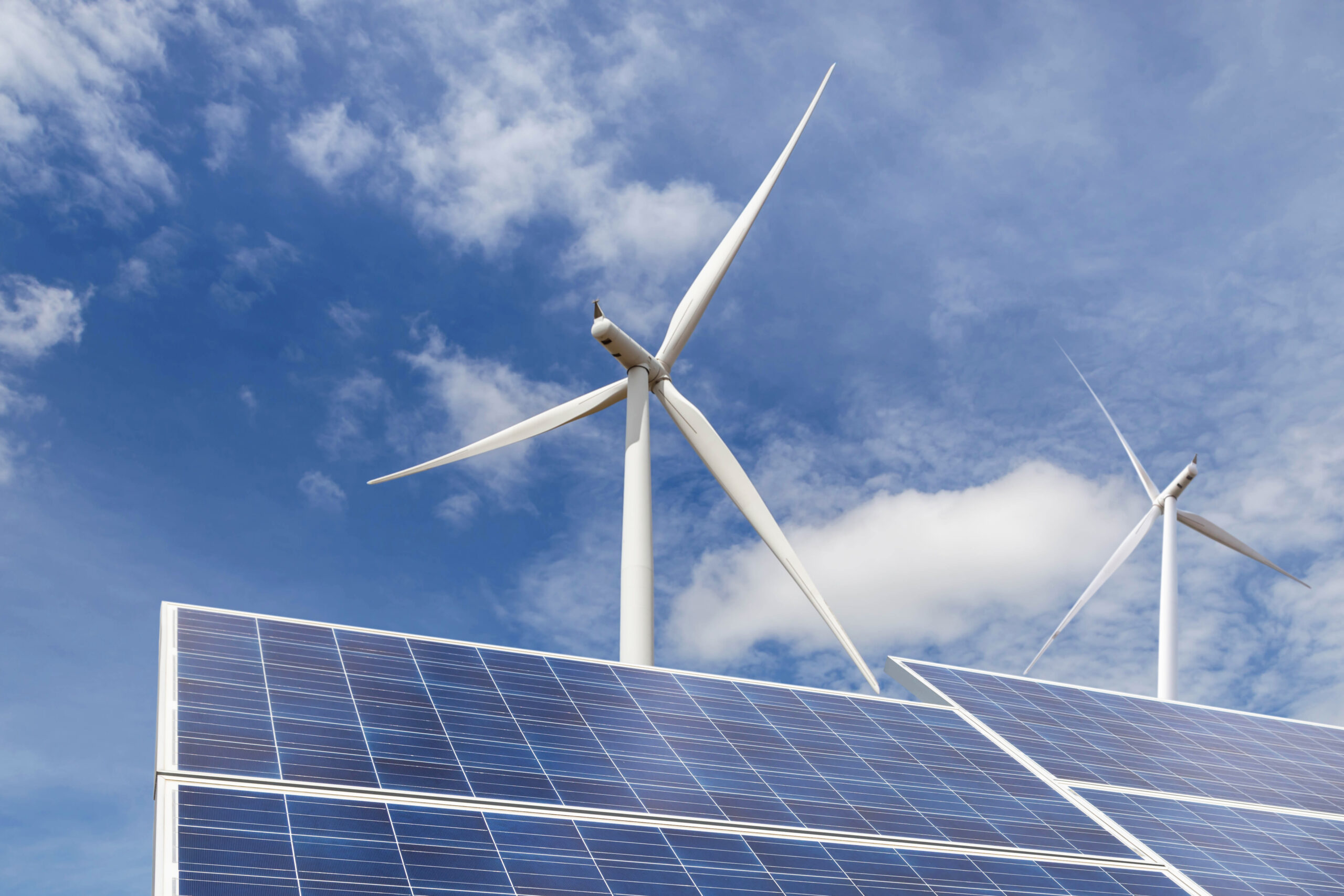
How To Set Up An RV Wind Generator
Harnessing the wind with an RV wind generator is one way to generate power. There is often at least a little wind where we camp, but we may go for days without seeing the sun.
It makes sense that wind power seems to be the way to generate off-grid power. In 2020, nearly 8.4% of the electricity in the US was generated by wind power. You may be wondering why the RV crowd hasn’t embraced wind-generated electricity.
What are the downsides to RV wind generators?
As it turns out, there are some good reasons why RV wInd generators have not really caught on.
- A wind turbine doesn’t produce as much electrical energy as solar power does. A 10 mph wind produces just 40 watts of energy.
- You have to camp in windy places (but not too windy). Wind turbines operate best when winds are about 20 mph to 25 mph. If the wind is above 30 mph, they shut off to avoid damage.
- You can’t leave the turbines up when you travel. Every time you move, you need to assemble and raise the turbine. Then before you can take off to a new location, you need to take the wind turbine down, disassemble, and pack it away.
- Wind turbines have a reputation of being noisy and producing a lot of vibration when they are turning. However, manufacturers have addressed this by producing turbines that turn at a lower speed in relation to wind speeds.
- The poles tend to get damaged by lightning during storms because the turbine needs to be placed high to get adequate wind.
All that being said, for stationary RVers who don’t mind camping in windy places, an RV wind generator could be a good choice to help meet low power needs. An RV wind generator could even serve to supplement a primary solar power system. If either of these interest you, then read on.
What does an RV wind generator look like?
An RV wind generator consists of a bladed turbine mounted on top of a 10 to 20-foot pole, called a tower. The higher the turbine is mounted, the more wind-generated power it can produce. Mounting the turbine is also an option for some RV wind power users.
Turbine blades are designed to be disassembled and packed away neatly for storage. The pole that holds the turbine is often disassembled into two parts. Apart from the turbines, a wind-generated power system operates much the same as a solar power system.
How to set up an RV wind turbine
RV wind turbines are super easy to set up. When you buy a turbine, it will come as a kit with everything you need to set it up. Here is the basic procedure for building an RV wind generator.
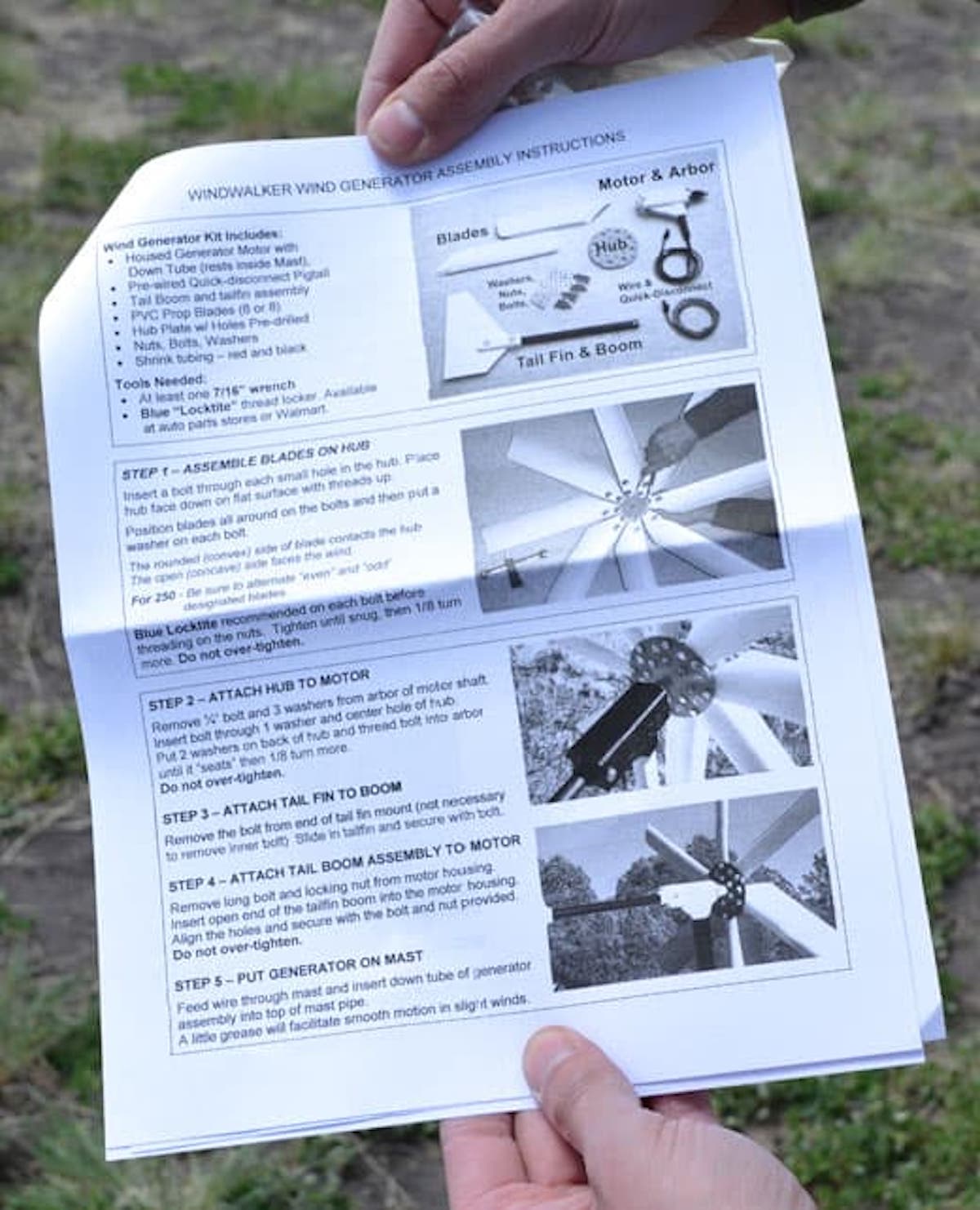
Step 1: Read the instructions
You can either read the instructions that came with your wind turbine first, or you can plow ahead, and if all else fails, read the instructions.
Step 2: Put the wind turbine together
Connect all the blades together and install the cap. Attach the wire rings to the bottom. These will be further connected to the pipe the turbine will be mounted onto.
Step 3: Build a tower for your turbine
You could go to the hardware store and hunt for parts to set up your wind turbine tower, but buying a tower kit to mount your wind turbine on will really simplify your RV generator setup. We recommend that you get a low vibration tower to help reduce both noise and vibration.
A kit comes with everything you need to build your RV wind power tower and install your wind turbine. Here is one tower kit that is available: ERV Tower Installation Kit
Step 4: Find the best spot
You’ll want to locate your wind turbine so that it faces into the wind and is held firmly in place by the RV ladder, tongue, or even a wheel, if your tower assembly allows this. Always be careful that the turbine is held in place and that no part of the body is in contact with it when setting it up. Wind turbines can easily do significant damage including amputating fingers and other body parts.
Step 5: Wiring the turbine
Each turbine comes with different wiring components, but most have a built-in charge controller or at least come with one that you can easily wire close to the turbine. The battery bank can be connected directly to the turbine with a heavy gauge wire that will provide less electrical current resistance than a smaller gauge wire.
it is recommended that a stop switch be installed on the red wire of the system in case you need to stop the turbine for some reason. You should also always install a fuse somewhere in the system to protect your electrical system. The wires will go from the turbine to the battery bank through the turbine tower.
Step 6: Mount the turbine on top of the tower
Now you’ll need to mount the turbine onto the tower. Either your turbine or your tower kit will come with the necessary mounting hardware.
Step 7: Secure the tower
Secure the tower using three ratchet straps and metal hardware to make tight guy lines that will hold it firmly in place.
Notes:
- Never attempt to use PVC pipe to build a tower for your wind turbine.
- Keep your turbine clean.
- Check screws and fittings periodically and tighten screws as necessary.
- Replace damaged blades immediately.
RVers looking for valuable how-to information have learned to go to the experts. Forums such as iRV2.com and blog sites like RV LIFE, Do It Yourself RV, and Camper Report provide all the information you need to enjoy your RV. You’ll also find brand-specific information on additional forums like Air Forums, Forest River Forums, and Jayco Owners Forum.
Related articles:

